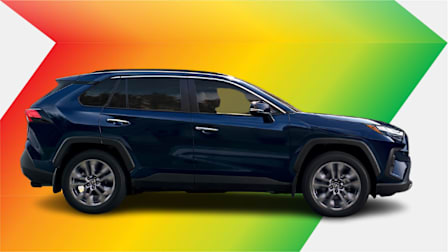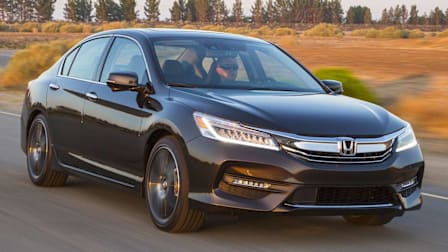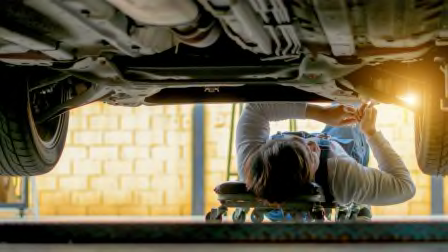How to Safely Drive Home With a Christmas Tree. And Should You Decorate Your Car With Lights?
We answer your automotive questions to keep you safe this holiday season
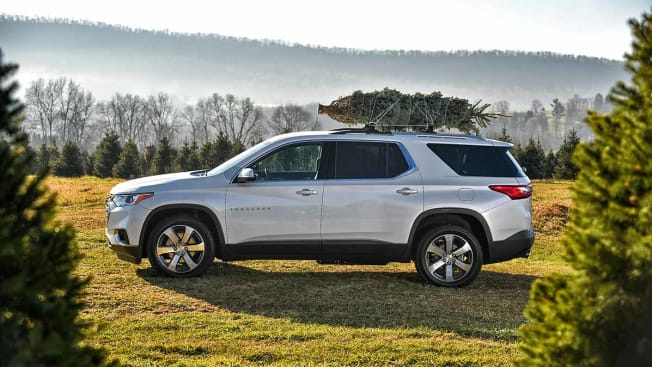
Whether hauling home a Christmas tree or decorating a roof rack with lights or tinsel, lots of Americans use their cars to get into the holiday spirit. But unless you tie that tree down safely, it could pose a hazard to you and your car—not to mention other drivers on the road. And the wrong decorations could even run afoul of the law.
We talked to Consumer Reports’ auto safety experts, road safety advocates, automotive engineers, and an industry trade group to learn tips and tricks for safely transporting trees and decorating your vehicle.
Can You Put a Tree on the Roof of Your Car?
Unless you can fit your tree inside your vehicle, you really need a roof rack and the proper supplies to keep the tree on the roof. In a AAA survey, 20 percent of respondents who plan to purchase a tree said they were going to tie it to the roof without using a roof rack. But in addition to creating a safety hazard, transporting a tree that way can damage your car.
“Too often, we see people put a loop of twine through the doors and off you go,” says Brannon. “That’s a great way to tear the seals of the door.” That’s why you should attach your tree to the roof rack and not to the vehicle.
AAA estimates that tree-related damage could cost anywhere between $100 and $1,500 to repair, depending on how much paint is scratched and whether the twine damaged the rubber gaskets that keep water from leaking through a vehicle’s doors.
If you are bringing a tree home, you need a roof rack, says Art Koby, who worked as an accessories product manager at General Motors. “You’re keeping your cargo elevated above the roof,” he says. “Especially if you have a sunroof, you’re going to greatly reduce your chances of damaging the paint or damaging the roof.”
Plan ahead before you pick up a tree, says Jen Stockburger, director of operations at CR’s Auto Test Center. "We recommend dedicated tie-downs, like nylon ratchet straps, particularly if you’re going any distance or traveling at highway speeds,” she says. “The free rope that tree sellers give out just doesn’t cut it.”
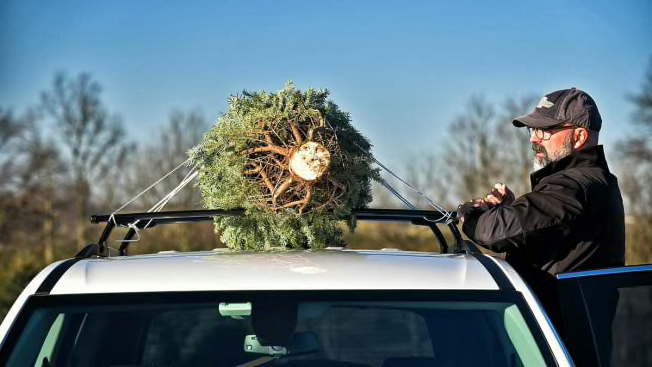
Photo: Chevrolet Photo: Chevrolet
Can You Put Lights or Decorations on Your Car?
We hate to sound like the Grinch, but as festive as automotive decorations can look, you might want to skip them, especially if they involve lights.
Many states have laws that restrict exterior lighting on vehicles. In New York, for example, only authorized emergency services are allowed to use blue and green lights, and there are further restrictions on how and where lights can be installed.
Even if your car’s lights are legal where you drive, decorations might pose a distracting safety hazard. "The distraction can be both to you as the driver and to others as they are watching your car instead of the road," says CR’s Stockburger.
Decorations can also become a road hazard if they detach, and strong fasteners used to hold everything in place could damage the vehicle.
"Lights can certainly mess up the paint as they blow and shift in the wind. Add in that there can be sand and salt all over the place, and it only gets worse," says Michael Crossen, lead automotive technician at Consumer Reports. "You could put decorations on a roof rack or maybe the grille area without causing damage, but the legal aspect still applies if they’re lit up."
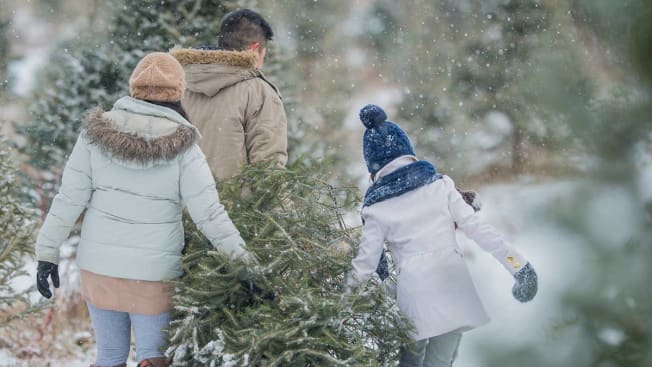
Photo: iStock Photo: iStock
Will a Christmas Tree Damage Your Car's Paint?
Yes! That’s why you should bring along a tarp or a blanket.
“Tree sap is hard to remove from paint, and tree branches can leave scratches, so put something underneath to protect your car,” Stockburger says.
She also recommends buying a tree that has been bagged or netted. This not only keeps branches corralled but also reduces wind resistance during travel, meaning your tree won’t shed as many branches or needles and will look much better once it gets home.
Finally, you should have friends or family at the ready who can help you load and unload the tree. Dragging it across the roof increases the chance of damage.
If you don’t have the right vehicle or don’t feel confident bringing a tree home yourself, you can still get a real tree without making a trek. Big-box stores like Lowe’s and Costco can ship live trees to customers, and some local tree farms will deliver for an additional fee. There are also dedicated tree delivery services, and artificial trees tend to come in boxes smaller than their fully assembled size.
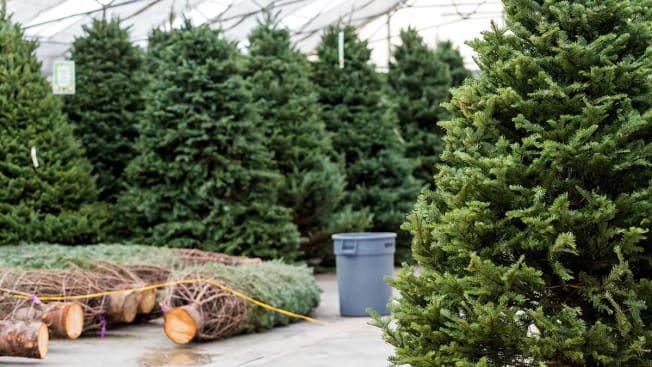
iStock-476618688 iStock-476618688
Which Direction Should Your Christmas Tree Point?
It might seem counterintuitive, but AAA’s Brannon says a tree’s trunk should be facing forward if it’s tied to the roof. That’s for aerodynamic reasons because the wind could whip up the smaller end of a tree and ruin it or even blow the tree off the car. The heavy trunk will keep the tree settled and also makes a better anchor point.
“Make sure you anchor it just above the bottom branches,” he says, because the branches above the trunk provide a solid mounting point so that the tree won’t come off in the wind or fall if you stop short.
CR’s Stockburger recommends driving slowly with any cargo on the roof—especially if it’s a tree.
“There’s so much airflow coming up over the top of the car that slowing down will reduce stress on what you’ve used to tie the tree down,” she says. “If you are going any distance, it’s worth it to stop to check a few times along the trip to make sure the tree remains securely tied down.”
Even if your tree falls off your roof and it doesn’t cause injury, it could hurt your wallet. In every state, drivers can be fined if an item falls from their vehicle, with penalties as high as $5,000.

Photo: iStock Photo: iStock
Sleigh? No. SUV? Yes.
The typical roof rack can carry a load from 110 to 220 pounds, says Joel Batchler, an engineer who has designed roof carriers at General Motors. Typical Christmas trees weigh roughly 50 to 70 pounds, so they should be no problem, he says. Still, “we always recommend owners check with their owner’s manual to check what their roof rack is rated for,” he says.
Even if a tree isn’t too heavy, it might be too long for your car. The typical tree is 6 feet tall—fine for most SUVs or station wagons, but twice as long as the roofs of many sedans. That makes vehicles with a long roof ideal for tree transit.
“The general guideline is that you don’t want to obscure your forward upper vision,” Batchler says.
He also warned drivers to be careful about putting a tree in the back of a pickup truck. State and local laws dictate how far cargo can stick out beyond a truck’s bed, and you may need to attach a red flag to the end of an extra-long load to warn other motorists.
Any tree in the back of a truck should be secured. Still, 24 percent of likely tree buyers who responded to the AAA survey said they planned to place the tree in the bed of a pickup truck without further securing it.
If you have a smaller tree, GM’s Koby recommends carrying it inside a vehicle.
“If you’re able to fold your rear seats down flat and carry the tree inside the vehicle vs. outside the vehicle, obviously it’s easier from a loading standpoint,” he says.
Even if the tree is inside a vehicle, it should be secured so that it doesn’t injure vehicle occupants in the event of a crash. Also, put down a large tarp or blanket first so that the tree doesn’t leave a mess.

















